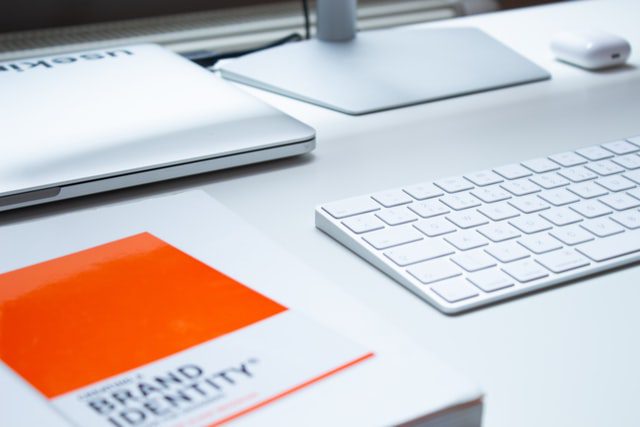Last Updated on: 19th December 2020, 09:47 pm
What is a website redesign, what does the process consist of
Unlike other tasks (for example, revamp or create a new website), the redesign process aims to improve what works and fix non-working areas of the web project. The redesign process is a large-scale and multifaceted work to build a successful web project that considers many aspects of the business.

Step 1. Risk analysis
The first thing to start with the redesign process is with a risk analysis. Ignoring the strict rules of a redesign can turn the whole process into a roulette with an unknown result. A redesign is primarily a rigorous conversion optimization strategy. Many agencies and marketing departments “forget” about this stage and immediately start the redesign process, which leads to unpredictable results.
Reducing the risks of redesigns is achieved by setting up controlled A / B tests such as A / B n-testing and moving them to more complex multidimensional testing. The data obtained from these tests are used to make accurate and informed changes. This practice leads to a significant increase in sales while reducing risk.

Step 2. Competitor analysis
In the second step, you will need to analyze competitors; this step must not miss essential details to help your site stand out from your competitors. Also, the competitive analysis will reveal the strengths and weaknesses of the closest competitors. We should use the information obtained from the research to determine how to manage further redesign steps.
And already in this chosen direction, it is worth strengthening the development of events. We should exclude other directions from the process due to tough competition. Thus, avoiding challenging competition, the redesign will follow the path of least resistance, and this will save material and time resources by discarding a deliberately failed strategy. This step, in turn, will allow you to build the correct structure for the development of the entire project.

Step 3. Content revision
This step of the redesign must be carried out during the construction of the site & user experience design’s information architecture. To find out the needs of the project in content and further prepare it for placement in the site structure, it is necessary to audit it. Further study of the statistics obtained will provide information about that:
- which content needs to be modified and supplemented,
- what new content will need to fill in the structure’s gaps,
- is there any content that we can combine
- and which can be archived or removed.
After obtaining the necessary information, you can start writing texts and preparing visual content (images, icons, videos, etc.). Using real content in redesign allows you to make an accurate layout of the site without fear of its spread. This approach also considers the length of the pages and fills them with the correct content, and the need to fill empty blocks with “content with water” disappears.
And most importantly, this method will not allow the site to be inflated with unnecessary, junk content and turn it into an information trash heap.
Step 4. Site architecture
Here we start with a thorough analysis of the site’s structure we improve. The purpose of this will be to find out how deep the redesign team’s intervention should be in the project under study. And based on this analysis’s indicators, the redesign team will decide whether a partial redesign of the structure is needed or a completely new project architecture needs to be created.
Why waste time and effort in building a seemingly working structure? The hierarchy of the site’s pages should resemble a pyramid, the top of which is occupied by the home page. Below it, there are categories or sections, subcategories (for large sites), and individual pages. And having such a structure is very important to understand Google, which is crucial to your SEO. Also, the site’s well-built structure allows visitors to navigate comfortably through it without causing any difficulty.

Step 5. User experience (UX) design
The main goal of UX design is the harmonious interaction between the user and the website. And the design process always begins with general research and then – user research. The business’s goals and objectives are clarified, and that knowledge allows the UX designer to accurately determine the necessary functions to launch an MVP (minimum viable product).
User Persona
Having studied what goals and objectives users pursue, we create a User Persona. This method makes it possible to understand the user of the developed product and what attitude users will have towards it. Also, for a better understanding of the user, how he uses the product, and the difficulties he faces when using it, you can find out using the Customer Journey Map. This method will eliminate the identified barriers in the user’s path and make the most convenient and easy-to-use product for him.
User flow
Further, to structure the entire project and better represent the whole picture of the ongoing processes and understand the total number of components used and the project’s connections, a User Flow is created. Simultaneously, with the creation of necessary User Flows that visualize the user’s full path using the website, a Website wireframe is created. The wireframe is a visual, two-dimensional layout of any web page that focuses on the interconnection of key interface points and provides a clear view of the page structure.
Visual Design
Further steps will be a Prototype and Mockups. The prototype is a working model of a web page or application that can be low or high fidelity, both paper and digital. Low fidelity prototype is essential for generating user feedback, allowing product testing with minimal time and money investment.
As for Mockup, it is an imitation of a finished product that accurately reflects the visual appearance of a website or application design. The main task of Mockup is to obtain information about user interaction with the real product model. We build the Mockup using the necessary typography, iconography, colors, and general style. It also allows you to simulate how a website works on mobile devices.

Step 6. Branding
Even in the sixth step of the redesign, an analysis will have to be carried out, only this time, it will be an analysis of the website’s visual component. Since the visual part is the face of any business, we need to treat it with special attention. (Especially for small businesses). We need to find out how modern the site looks. Are the fonts modern and easy to read? Whether the fonts used are compatible with the overall design of the project. Is the overall font hierarchy followed? Are corporate colors and shades represented on the site?
The collected information is used to create guidelines and describe the corporate style. At this stage of the redesign, the use, appearance, size, and location of elements such as logos, buttons, images, and icons on the pages will also be thought out.
Conclusion
By adhering to all the steps of this roadmap consistently, you can get good results and increase your old site’s efficiency at the lowest cost and without building it from scratch.
At Fastredesign.com, we specialize in all the described services and can provide a comprehensive redesign for your website. Contact us for the detailed consultation.

